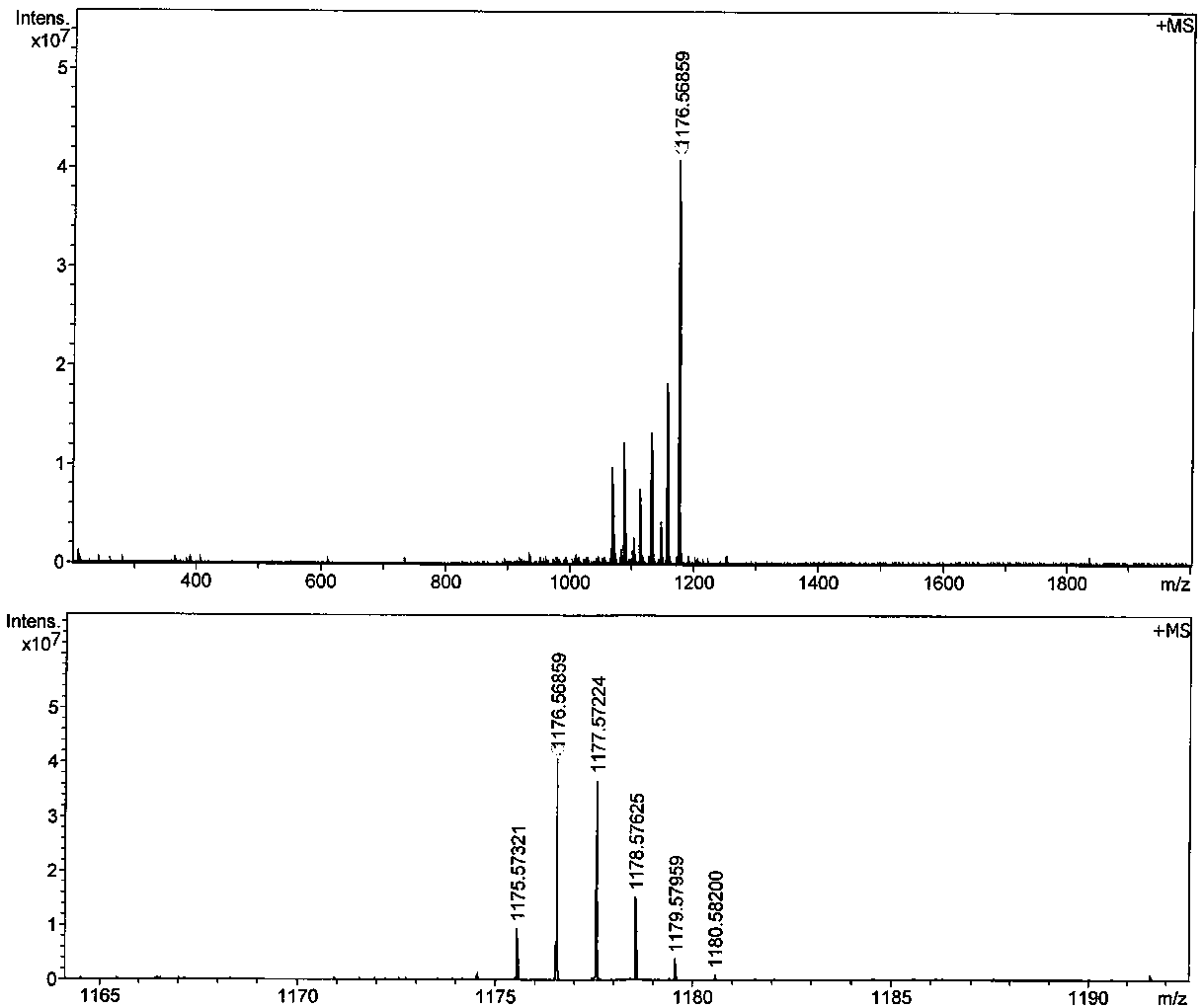A kind of two-photon fluorescent dye based on 4-methoxyphenyl substituted fluoroboron dipyrrole and dianilinofluorene and its synthesis method
A fluoroboron-substituted dipyrrole, two-photon fluorescence technology, applied in the field of fluorescent dyes, can solve the problem of insignificant improvement of the two-photon absorption cross-section, achieve good single-photon and two-photon absorption and fluorescence performance, improve the two-photon absorption cross-section, The effect of high synthesis yield
- Summary
- Abstract
- Description
- Claims
- Application Information
AI Technical Summary
Problems solved by technology
Method used
Image
Examples
Embodiment 1
[0025] Example 1: Synthesis of 2,6-iodofluoroboron dipyrrole fluorophore 1a
[0026] Under argon protection, add 500 mL of dichloromethane, 18.9 mmol of 2,4-dimethylpyrrole, 7.6 mmol of 4-methoxybenzaldehyde and three drops of trifluoroacetic acid as catalysts into a 1000 mL three-neck flask, and stir magnetically at room temperature After 6 h, 7,9 mmol of 2,3-dichloro-5,6-dicyanobenzoquinone (DDQ) was dissolved in 150 mL of dichloromethane, added to the above reaction solution, and continued to stir at room temperature for 15 min. Then, 10 mL of diisopropylethylamine (DIEA) and 10 mL of boron trifluoride ether solution were added to the above reaction liquid, and after stirring at room temperature for 30 min, 200 mL of water was added to quench the reaction, dichloromethane was extracted, and the liquids were separated. , dried over anhydrous sodium sulfate, the solvent dichloromethane was distilled off in vacuo, using dichloromethane:petroleum ether=1:2 as the eluent, and se...
Embodiment 2
[0028] Embodiment 2: the synthesis of diphenylamine-fluorene-acetylene compound 2e (R=C 2 h 5 )
[0029] (1) Synthesis of 2a
[0030] In a 250 mL round bottom flask, dissolve 5 g of fluorene into 50 mL of dry chloroform, dissolve 4.18 mL (2.74 times) of liquid bromine in 30 mL of dry chloroform solution, and in a constant pressure dropping funnel at 0 °C Add the above mixture dropwise to the reaction flask. Stirring overnight under dark conditions, the saturated Na 2 S 2 o 3 Add the solution to the reaction solution to neutralize the excess liquid bromine, quench the reaction, separate the layers, wash the organic layer with water several times, and add anhydrous MgSO to the organic phase 4 After drying for half an hour, anhydrous magnesium sulfate was removed by filtration, the solvent was removed by vacuum rotary evaporation, and recrystallized in ethanol to obtain a white solid 2a with a yield of 95%.
[0031] (2) Synthesis of 2b
[0032] Add 5 g of 2,7-dibromofluor...
Embodiment 3
[0039] Embodiment 3: the synthesis of two-photon fluorescent dye TPFD (R=C 2 h 5 )
[0040] In a 10 mL Shrek reaction tube, add compound 2e (0.11 g, 0.26 mmol), Pd 2 (dba) 3 (4.58mg, 5%), tris(2-furyl)phosphine (2.32 mg, 10%) and CuI (1.9 mg, 10%), then add 0.8 mL of anhydrous N,N-dimethylformamide (DMF ) and 0.2 mL of freshly treated triethylamine, add compound 1a ( 0.1 mmol) under nitrogen protection, seal the reaction bottle, and react at 60 °C for 0.5 h, TLC board detection raw material fluoroborate dipyrrole reaction is complete Finally, stop the reaction, pour the reaction solution into ether, transfer to a separatory funnel, wash with water several times, let stand to separate layers, and wash the collected upper organic phase with anhydrous MgSO 4 Dry, filter with Buchner funnel to remove anhydrous magnesium sulfate, evaporate and concentrate in vacuo, dissolve the resulting blue solid in dichloromethane, and adsorb onto silica gel, using petroleum ether:dichlorom...
PUM
 Login to View More
Login to View More Abstract
Description
Claims
Application Information
 Login to View More
Login to View More - R&D
- Intellectual Property
- Life Sciences
- Materials
- Tech Scout
- Unparalleled Data Quality
- Higher Quality Content
- 60% Fewer Hallucinations
Browse by: Latest US Patents, China's latest patents, Technical Efficacy Thesaurus, Application Domain, Technology Topic, Popular Technical Reports.
© 2025 PatSnap. All rights reserved.Legal|Privacy policy|Modern Slavery Act Transparency Statement|Sitemap|About US| Contact US: help@patsnap.com



